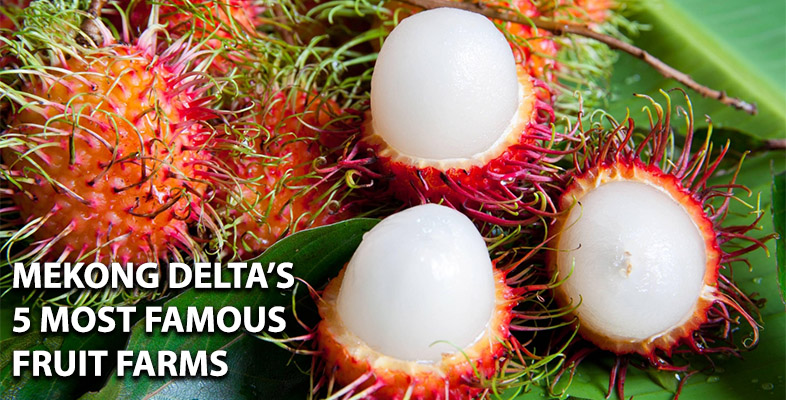
- On 5 August, 2020
- In ALL BLOGS VIỆT NAM BLOGS
- Tags Tags: dragon fruit, durian, fresh fruits, fruit, mandarin, mango, mekong, mekong delta, rambutan
MEKONG DELTA’S 5 MOST FAMOUS FRUIT FARMS
The fruit gardens in particular and Mekong Delta in general are beautiful to travel all year round. However, if we have to pick one period, we would say summer is the best time to take Mekong Delta group tours to the orchards.
Summer is when the South steps into its wet season, hence there would expect to be some seasonal rains. Still, the weather is rather pleasant to travel with a lot of dry and bright daylight hours. The average temperature is around 29oC, which is just perfect for a summer day.
More importantly, summer is when the region goes into the harvest season. Being full of fresh ripening fruits, the orchards are in their best looks.
- Dragon Fruit Farm, Châu Thành District, Long An Province
- Rambutan Gardens, An Bình Island, Vĩnh Long Province
- Mandarin Gardens, Lai Vung District, Đồng Tháp Province
- Hòa Lộc Mango Gardens, Cái Bè District, Tiền Giang Province
- Durian Gardens, Chợ Lách District, Bến Tre Province
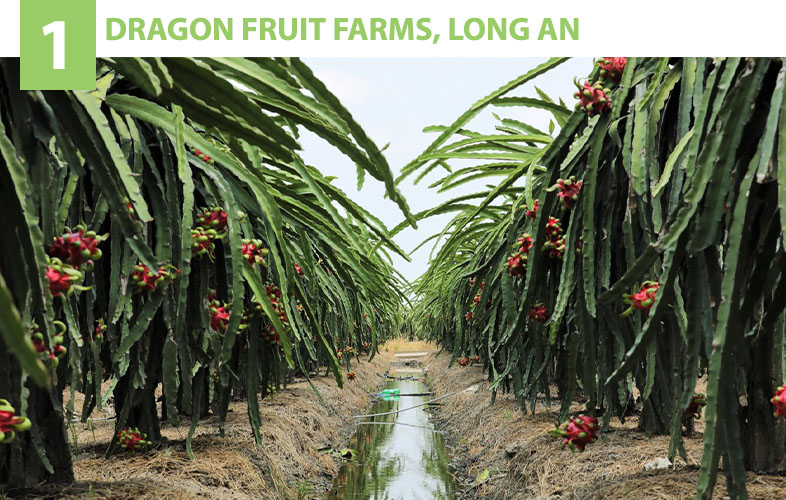
In the world, Dragon fruit has also another name such as pitaya and strawberry pear. Especially, the dragon fruit is described by many as a piece of kiwi and a pear at the same time.
Việt Nam is the only country in Southeast Asia growing and exporting dragon fruits. We have a total area of about 2000 ha. The dragon fruit farm is suitable for growing in hot areas with high light intensity. Moreover, trees grow on many different soil types such as gray soil, alum soil, and red soil. The dragon fruit farm is cultivated a lot of places, for example, Long An, Binh Thuan, Long Khanh and so on.
Just about one-hour drive from Hồ Chí Minh City, you will arrive at Long An and its dragon fruit farms. Depend on the season, you can see the Dragon fruit with laden tree, flawless white flowers blooming at night and try various delicious dishes made from the fruit. Flowers of dragon fruit is really special as it only blooms at night, pure white, smell like vanilla and its diameter is about 30cm. Despite the fact that these flowers will fade after one night, many people use it for decoration. The red dragon fruit, which has come out recently, is favored by many people as it has beautiful color and pure sweet taste.
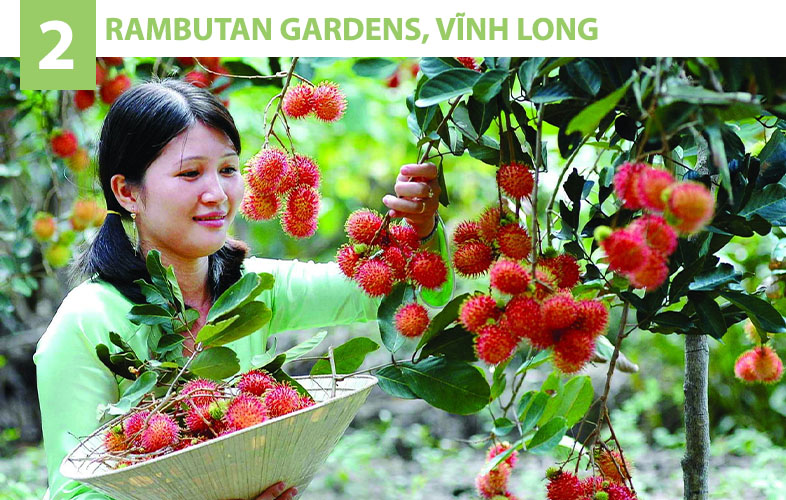
It takes us around 3-hour drive from Hồ Chí Minh City to An Bình island, Vinh Long Province, Mekong Delta. The island covers the area of 6,000 hectares. It fills with fertile, rice, fresh water and tropical fruit trees.
The quiet lanes of An Bình are serene and picturesque – perfect for casual cycling. The narrow lanes take you past traditional delta thatched home, friendly villagers and lush orchards and gardens. If you travel there during the wet season (late July to September), you shouldn’t miss visiting to a rambutan garden.
Rambutan got its name from the Malay word for hair because the golf-ball-sized fruit has a hairy red and green shell. Its unmistakable appearance is often compared to that of a sea urchin. The fruit is related to the lychee and longan fruits and has a similar appearance when peeled. Its translucent white flesh has a sweet yet creamy taste and contains a seed in its middle.
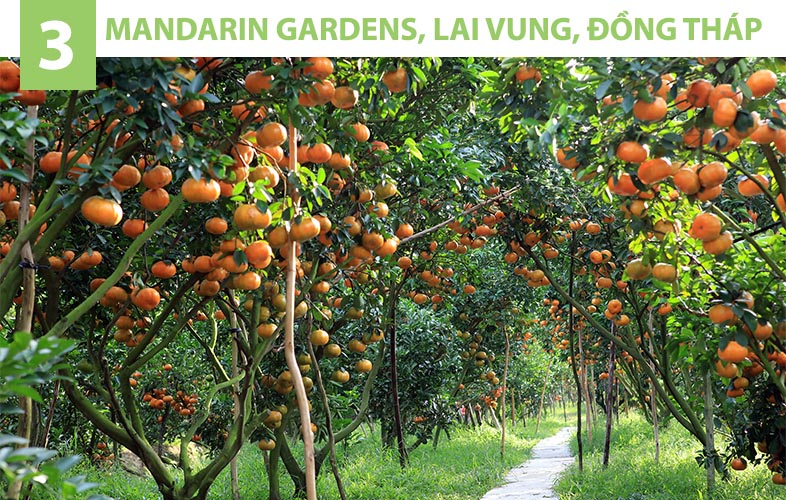
Lai Vung District in Đồng Tháp Province is a popular tourist destination thanks to its rich culture and beautiful nature. Its mandarin gardens particularly attract tourists.
Nestled between the Tiền and Hậu rivers, Lai Vung district is blessed with a rich soil and abundant sources of fresh water. It covers an area of nearly 2,000 hectares specifically for cultivating mandarin trees. According to a gardener in Long Hậu commune, the region provides 20,000 to 40,000 tons of mandarin annually to the local market.
Its juicy and sweet mandarins are famous nationwide, especially red mandarins, which were first planted in the region in the early 20th century. Lai Vung is called the “Kingdom of red mandarins”. Harvest time is the best time of the year for the locals and visitors. Tourists are invited to join local farmers and traders in harvesting. Some farmers have cooperated with travel companies to develop ecotourism and experience tours. Visiting the mandarin gardens and listening to amateur southern singing is an unforgettable experience.
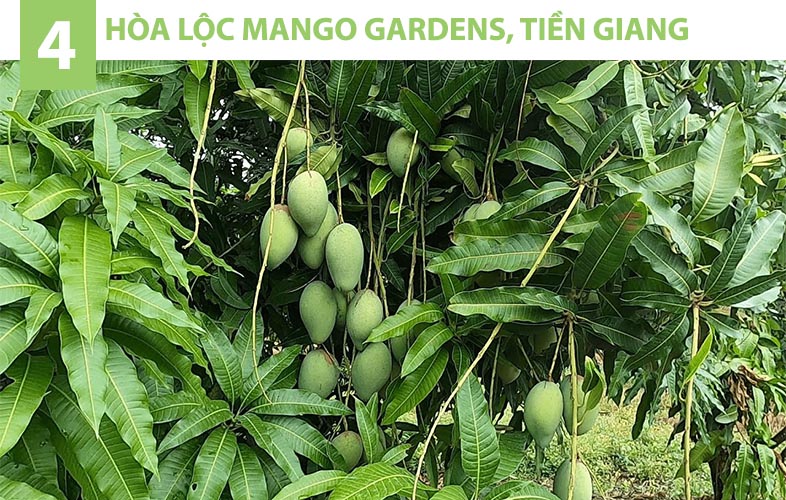
Hòa Lộc Mango is the most famous of its kind in Mekong Delta. It was grown firstly in 1930 in Hòa Hưng commune, Cái Bè District, Tiền Giang Province, formerly named Hoa Loc commune. Its name is also derived from the old name of the commune where alluvial deposits are most suitable for the tree. Each oval shaped mango is from 350 – 450 gram in weight, bright yellow at maturity, fleshy and less fibrous, very sweet and aromatic.
Because of its good taste and high nutritional value, Hòa Lộc mango became the reputation brand not only in Việt Nam but also around the world. According to local farmers who specialize in mango planting for years, the reason why the Hòa Lộc mango is good because of this region’s soil. If Hòa Lộc mango trees are brought to other places, the fruit is still lush but the taste is no longer as unforgettable as mango grown in Hòa Lộc.
Hòa Lộc mango blossoms in the summer and leaves ripe fruits in the early winter, approach traditional Tết so this is a great gift for guests in the spring. Because of that originality, the mango here is popular and very much in demand.
Visiting the mango garden in the crop is joyful. Tourists walk in the mango garden and have chances to enjoy the unique specialty of the Southern garden, meet and talk to the hospitable and gentle farmers. They are memorable and unforgettable experiences in the journey to Mekong Delta.

Cái Mơn Orchard Village is considered as the kingdom of bonsai in Vietnam, and the cradle of fruit trees in the South, with fruit ready for visitors in any season. Located on the bank of the Tiền, Cái Mơn’s professional village annually supplies products such as mangosteens, mangoes, longans and special durians.
According to the Department of Science and Technology of Bến Tre Province, the National Office of Intellectual Property of Việt Nam under the Ministry of Science and Technology has issued the certificate of geographical indication registration No.00080 Cái Mơn for the durian product of Bến Tre Province.
It produces fruit year-round, but the main season is between May and July when it tastes best. Rice durian white or ivory surrounds the seeds in fertile chicken. Sweet rice with thicker, more fat, more fragrant. Fat rice to eat durian suggested as the fat of butter or milk.

